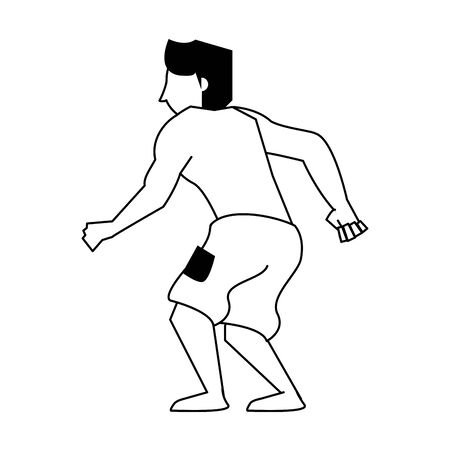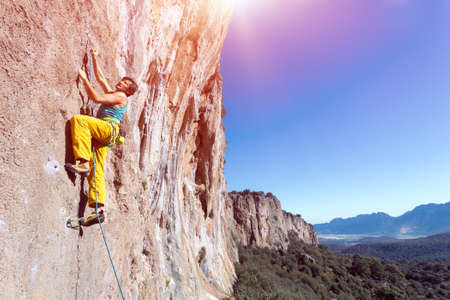1. Understanding Layering Basics: The Key to Comfort and Safety
Layering is the foundation of smart hiking apparel, especially when exploring the diverse climates across the United States. Whether you’re trekking through the rainy Pacific Northwest, braving the chilly Rockies, or enjoying a sunny day in the Southwest, understanding how to layer your clothes can make or break your outdoor experience.
Why Layering Matters for U.S. Hikers
Weather in the U.S. can change quickly—from dry heat to unexpected rain showers, or warm afternoons followed by cool evenings. Layering gives you the flexibility to adapt on-the-go, helping you stay comfortable and safe no matter what Mother Nature throws your way. It’s not just about comfort; proper layering helps prevent hypothermia, overheating, and moisture-related issues that could turn a fun hike into a risky situation.
The Classic Three-Layer System
Most experienced American hikers use a simple three-layer system to manage body temperature and moisture:
| Layer | Purpose | Common Fabrics |
|---|---|---|
| Base Layer | Wicks sweat away from your skin to keep you dry | Synthetic (polyester), merino wool |
| Mid Layer | Provides insulation to retain body heat | Fleece, down, synthetic fill |
| Outer Layer (Shell) | Shields you from wind, rain, and snow | Waterproof/breathable membranes (Gore-Tex, eVent) |
How Each Layer Works Together
The magic of layering comes from each piece working in sync:
- The base layer pulls sweat off your skin so you don’t get chilled as you move or rest.
- The mid layer traps warmth close to your body but lets moisture escape.
- The outer layer blocks out the elements while letting vapor pass through, so you don’t overheat or get soggy inside your jacket.
Regulating Body Temperature and Moisture on the Trail
No matter if you’re hiking in Yellowstone’s unpredictable spring or Arizona’s dry autumn, layering lets you adjust your outfit as conditions change. Peel off a layer if you’re getting too warm on an uphill climb or zip up that shell when a cold front rolls in. By mixing and matching these layers, you can handle almost any weather America’s trails throw at you—keeping every adventure safe and enjoyable.
2. Base Layers: Staying Dry and Comfortable
Why Base Layers Matter on American Trails
When youre hiking in the U.S., from the humid forests of the Pacific Northwest to the dry deserts of Arizona, your base layer is your first defense against sweat and chills. It sits right against your skin and is all about moving moisture away, keeping you dry and comfortable as you hike through changing weather.
Understanding Moisture-Wicking Technology
Moisture-wicking fabrics pull sweat off your skin and help it evaporate quickly. This keeps you from feeling damp or cold, which is especially important if temperatures drop fast, like in the Rockies or Appalachians. Avoid cotton for base layers—once it’s wet, it stays wet. Instead, look for materials designed to keep you dry.
Synthetic vs. Natural Fibers: Which Is Right for You?
| Fiber Type | Main Benefits | Best For | Considerations |
|---|---|---|---|
| Synthetic (e.g., Polyester, Nylon) | – Dries fast – Durable – Affordable |
Humid hikes, high-output activities, rainy conditions | Might retain odor over long trips |
| Natural (e.g., Merino Wool) | – Great at managing moisture – Regulates temperature well – Naturally resists odor |
Variable climates, multi-day trips, sensitive skin | Can be pricier, sometimes less durable than synthetics |
Tips for Picking the Best Base Layer for U.S. Weather
- Think Seasonally: In winter or cold mountains, go for a heavier (midweight) base layer. In summer heat or humid regions, lightweight works best.
- Fit Matters: Your base layer should fit snugly but not too tight—think “second skin” without restricting movement.
- Packing Extras: For longer treks or variable weather (like in the Rockies), bring an extra set to swap out if one gets soaked.
- Watch for Seams: Flat seams prevent chafing on those long Appalachian Trail days.
- Choose Based on Activity: Fast-paced hikes? Synthetic is great. Slower pace or multi-day backpacking? Merino wool can’t be beat for comfort and odor resistance.
Popular Picks in the U.S.
If you’re shopping stateside, brands like Patagonia Capilene (synthetic) and Smartwool (merino wool) are trusted favorites among American hikers. Look for gear labeled as “moisture-wicking,” “quick-drying,” and “breathable” for reliable performance in any U.S. climate.

3. Insulation Layers: Keeping Warm in Every Region
Understanding Insulation Layers
The insulation layer, or mid-layer, is your main source of warmth when hiking in the U.S., especially as temperatures drop. Its job is to trap body heat while still allowing moisture to escape. Choosing the right insulating layer can make all the difference, whether youre hiking the chilly Rockies, the damp Pacific Northwest, or the breezy Appalachians.
Types of Insulation: Down vs. Synthetic vs. Fleece
| Type | Best For | Pros | Cons |
|---|---|---|---|
| Down Jacket | Cold, dry climates (e.g., Rockies) | Super warm, lightweight, compressible | Loses insulation when wet, expensive |
| Synthetic Jacket | Damp or variable conditions (e.g., Pacific Northwest) | Insulates when wet, dries quickly, affordable | Bulkier than down, less compressible |
| Fleece Jacket/Pullover | Mild to cool climates (e.g., Appalachians) | Breathable, quick-drying, budget-friendly | Not windproof, less warmth for weight compared to down/synthetic |
Tips for Choosing Your Mid-Layer by Region
- Rocky Mountains: Opt for a high-quality down jacket for cold nights and early mornings. If you expect snow or rain, bring a synthetic backup.
- Pacific Northwest: Synthetic insulation works best due to frequent rain and dampness. Fleece is also a great choice for layering under a shell.
- Appalachians: Lightweight fleece jackets are versatile here—ideal for cool mornings and evenings but easily packed away as temperatures rise during the day.
- Desert Southwest: Even deserts get cold at night! A light synthetic or down puffy can be a lifesaver after sunset.
Packing Tips for U.S. Hikers
- Layer up: You can always remove a layer if you get too warm, but its hard to add one you didnt bring.
- Avoid cotton: Stick with technical fabrics that wick moisture and dry quickly—cotton holds onto sweat and can leave you chilled.
- Test your layers: Try your gear at home before hitting the trail so you know how each piece fits together.
- Packing smart: Compressible jackets save space in your pack and are easy to grab when temps drop suddenly.
4. Outer Layers: Protection from Wind, Rain, and Snow
When you’re hiking in the U.S., weather can change fast—from dry desert gusts to sudden mountain downpours or a Midwest blizzard. Your outer layer is your shield against these unpredictable elements, so picking the right shell can make or break your day on the trail.
Choosing the Right Shell: Waterproof vs. Windproof
Not all outer layers are created equal. Some are just wind-resistant, while others keep both wind and water at bay. Here’s a quick look at what you need:
| Type | Best For | Main Features |
|---|---|---|
| Windproof Shell | Breezy ridgelines, cool fall hikes | Lightweight, blocks wind, often breathable |
| Waterproof/Breathable Shell (Rain Jacket) | Rainy days, wet forests, snowstorms | Sealed seams, waterproof zippers, adjustable hoods, pit zips for ventilation |
Technical Features to Consider
- Seam Taping: Fully taped seams stop water from sneaking in during heavy rain—essential for long hikes in the Pacific Northwest or Appalachians.
- Pit Zips: These underarm zippers help dump heat quickly without taking off your jacket—a lifesaver on steep climbs in humid conditions.
- Adjustable Hoods & Cuffs: Tighten them up to block out blowing snow or driving rain in the Rockies or Northeast winters.
- Pockets: Look for pockets you can reach while wearing a pack—handy for snacks and maps on the go.
Prepping for All-American Weather Surprises
The U.S. is huge and its trails cover everything from soggy Oregon coasts to high-altitude Colorado peaks. Always check the forecast before heading out—but be ready for anything! Even if it’s sunny when you start, toss a packable rain shell or windbreaker in your backpack. Many modern shells are lightweight and stuff into their own pockets, so there’s no excuse not to carry one.
Pro Tip:
If you hike year-round, invest in a 3-layer shell jacket. It offers better durability and breathability than simple 2-layer options—worth it if you’re trekking through wet summers in the Smokies or snowy winters in Vermont.
Packing Essentials Table
| Region | Must-Have Outer Layer |
|---|---|
| Pacific Northwest | Waterproof/breathable shell with pit zips |
| Sierra Nevada/Rockies | Windproof shell plus insulated layer for cold snaps |
| Southeast/Appalachians | Pocket-sized rain jacket; quick-dry materials |
Selecting the right outer layer means staying dry and comfortable—even when Mother Nature throws a curveball on your favorite American trail.
5. Seasonal Layering Strategies: Tips for Every U.S. Climate
Spring: Embrace Unpredictable Weather
Spring hiking in the U.S. means wild temperature swings and sudden rain showers. The key is to stay flexible with your layers. Start with a moisture-wicking base, add a light insulating mid-layer, and always pack a waterproof shell—especially if you’re heading to the Pacific Northwest or Appalachian trails where rain is frequent.
Spring Layering Checklist
| Layer | Recommended Fabric | Pro Tip |
|---|---|---|
| Base | Synthetic/Light Merino Wool | Quick-dry helps if you get caught in rain |
| Mid-layer | Light Fleece or Thin Down Vest | Add or remove as temps change |
| Shell | Waterproof/Breathable Jacket | Packs small in your daypack |
Summer: Stay Cool & Protected from the Sun
Hot summer hikes, especially in places like Arizona or California, require lightweight, breathable clothing. Choose UPF-rated fabrics to block UV rays and loose-fitting shirts for airflow. In humid Southeast states, moisture management is crucial—opt for quick-drying synthetics and don’t forget a wide-brimmed hat.
Summer Layering Checklist
| Layer | Recommended Fabric | Pro Tip |
|---|---|---|
| Base | Synthetic/Lightweight Wool Blend | Wicks sweat on muggy days |
| Sun Shirt/Mid-layer | UPF-Rated Nylon/Polyester | Covers arms without overheating you |
| Outer Layer (Optional) | Packed Rain Shell/Windbreaker | T-storms pop up fast in Rockies & Midwest! |
Fall: Prepare for Crisp Air & Early Frosts
The fall season brings cooler temps and colorful foliage across New England, the Rockies, and beyond. Bring warm yet breathable layers, like a mid-weight fleece and insulated vest. A windproof shell helps when chilly gusts sweep through open terrain.
Fall Layering Checklist
| Layer | Recommended Fabric | Pro Tip |
|---|---|---|
| Base | Midweight Merino Wool | Keeps you warm even if damp |
| Mid-layer | Fleece or Light Synthetic Insulation | Trap heat without bulk |
| Shell | Windproof/Water-Resistant Jacket | Blocks mountain breezes |
Winter: Battle Cold & Snow Like a Pro
From snowy Adirondacks to the Sierras, winter hikes call for serious insulation and protection from wind and wet snow. Always start with a thermal base layer, stack an insulating puffy or heavy fleece, and top it off with a weatherproof shell. Don’t skip insulated gloves, hats, and wool socks—frostbite is no joke!
Winter Layering Checklist
| Layer | Recommended Fabric | Pro Tip |
|---|---|---|
| Base | Thermal Synthetic or Heavy Merino Wool | Avoid cotton—it chills fast if wet! |
| Mid-layer | Down/Synthetic Puffy or Heavy Fleece | Layer up; adjust as you warm up hiking uphill |
| Shell | Waterproof/Breathable Hard Shell | Essential for snowstorms & icy winds |
| Accessories | Insulated Gloves, Beanie, Wool Socks | Pack extras for longer trips! |
Regional Pro Tips & Multi-Season Packing Advice
- Pacific Northwest: Waterproof everything—even in summer!
- Desert Southwest: Focus on sun protection, but bring a light jacket for cool nights.
- Rocky Mountains: Expect four seasons in one day; layer up accordingly.
- East Coast Appalachians: Humidity is high—choose breathable fabrics.
Packing for Multi-Season Trips? Here’s How:
- Choose versatile pieces that layer well together.
- Opt for lightweight gear that packs easily.
- Always include an emergency warmth layer (like a compact puffy jacket).
- Check local forecasts before you leave, but be prepared to adapt!


